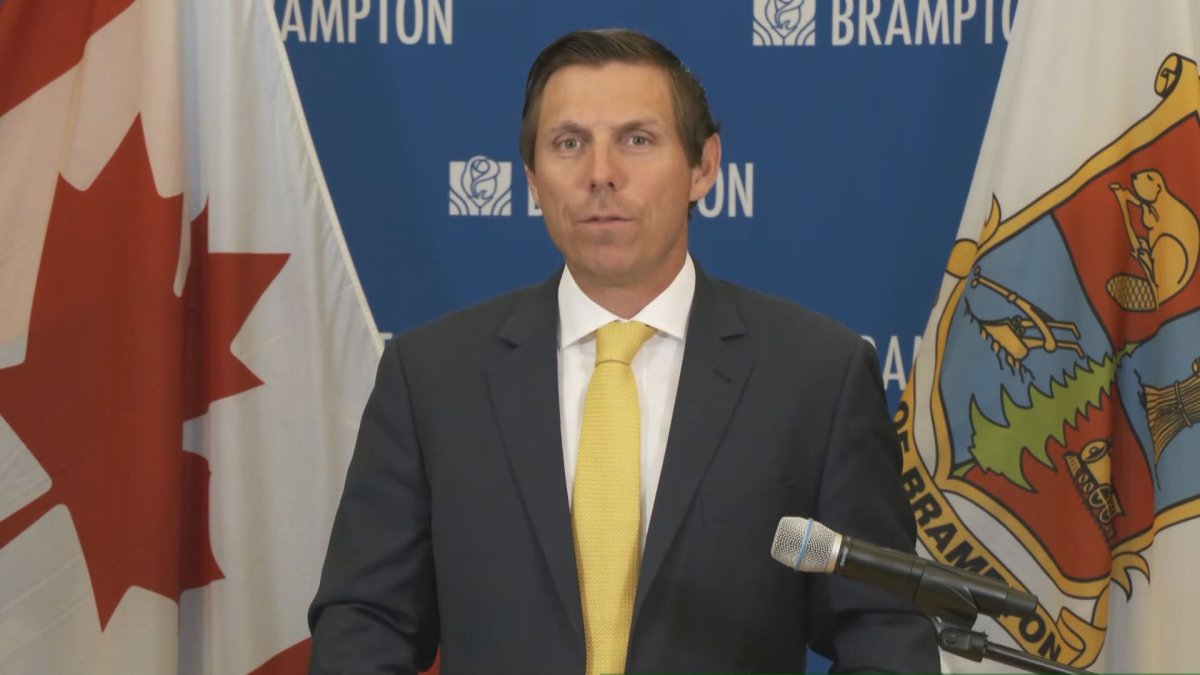Brampton Mayor Patrick Brown says he is working with health officials and hospitals to make neighbourhood-specific information regarding coronavirus cases available to residents “as soon as possible.”

“I understand that the GTA continues to be an area that is facing the spread of this virus, and Brampton is one of those hotspots,” Brown said at a weekly briefing on Wednesday.
Brown said he’s spoken to public health officials, including Dr. Lawrence Loh, Peel Region’s interim chief medical officer of health, in gathering that data that could tell residents in Brampton where the virus is most prevalent.
“We have their commitment to make that data available as soon as possible so residents know where there are areas of greater concern and areas where the virus seems to be circulating in the community at a greater rate,” Brown said.
“I think transparency is the best recipe.”
According to Peel Region Public Health, as of Wednesday the region has seen 4,312 positive and probable cases of COVID-19 since the outbreak began, with roughly half of those cases in Brampton. Data indicates Brampton accounts for 2,142 cases, Mississauga with 2,056 cases and 110 in Caledon.
Brown said he has been speaking to Premier Doug Ford almost every day on how to deal with Brampton being one of the hotspots for COVID-19 — one of the suggestions being getting support for increasing capacity for testing.

The mayor noted that Tuesday was one of the busiest days for testing in the city as they saw 1,184 people get tested at the assessment centre.

Get weekly health news
Brown said he has asked and encouraged City workers, transit, emergency services, and labour workers to get tested, including those in businesses in the downtown area that have reopened to the public.
“This is a real push in the City of Brampton to make sure we scale up testing so we can have a handle on where the virus is,” Brown said.
Loh said Brampton has seen an upward trend of virus infections and stressed the importance of getting tested. He said geographic data must be used with other tools to inform the public and communicate in the appropriate context.
“Geographic data that may be developed on testing data speaks more to where cases live, rather than where they may be exposed,” Loh said.
“Brampton’s population is highly mobile and interconnected in the Greater Toronto Area which means that acquisition of the disease could actually happen far away from home, as opposed to in the area they may show up on a geographic map.”
There is no date for when the specific neighbourhood-geographic data will be available for Bramptonians but Brown said they have asked public health officials to “expedite this as soon as possible.”
Loh said they want to make sure public health officials are able to communicate this data in the appropriate context to “avoid stigmatizing neighbourhoods.”
“Even though there may be an area identified within geography, it does not necessarily speak to where that individual may have been exposed,” Loh continued.
“And it does not necessarily speak to the risk in other areas being lower per se because our residents are very mobile, and they can be anywhere.”
Loh said cases appear to be spread out across Brampton and across Peel Region as a whole.
When it comes to fully reopening, Brown says Brampton “continues to be nowhere near that stage.”
“We are going to continue to take things at a very cautious pace to make sure we’re protecting the health of our residents,” Brown said.









Comments